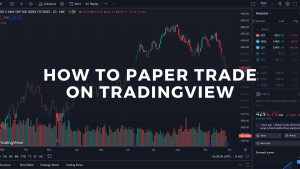This article on futures trading success rates is the opinion of Optimus Futures.
The Odds, Taken At Face Value, Are Dismally NOT In Your Favor
The statistics may not yield infallible evidence, but the consistency over time makes it clear.
90% of all day traders lose money!
There are numerous variations to this statistic as there are also numerous sources.
For instance, Forbes states that 10% of day traders actually make money. Most of us already know that. Tradeciety provides clearer and more time-specific futures trading stats–namely, that 40% of all futures day traders quit in 4 months, 80% quit within a year, and that only 7% are able to last 5 years or more.
Bear in mind that among the 20% who last over a year, not all of them are profitable, just persistent.
The Fallacy of the 10% Stat Points to Economic Mobility
Of course, no day trader wants to be a “casualty stat.” Nobody wants to be among the 90% who’ve failed. But have you ever thought about this hearsay statistic and what it might mean?
The 10% is a “fixed” category. Categories are fixed, but people are mobile.
This points to a common fallacy in economics.
Among the 20% who are the wealthiest in society, the people who comprise the upper echelon change over time. A family that was once poor becomes rich. Some families who are considered rich may, over time, find themselves in the less-wealthy categories; some have even become poor.
It’s called “economic mobility.”
So, before we discuss how to prevent yourself from becoming a casualty stat, let’s first talk about the stats themselves and this concept of mobility. Don’t be fooled by fixed statistical categories. There’s much more mobility in the markets (and in life) than you think.
Questioning Day Trading Stats
How long do people occupy the top 10% category?
Are we talking weeks, months, or years? If you’re able to make money–that is, not lose money to the extent of being forced out of the game–for two months straight, then you occupy that 10%. Perhaps you end up with a winning year. Perhaps you have some winning and some losing years, but overall, you came out a winner.
Reread that last sentence. It’s a key sentence.
You will experience periods of losses. It’s inevitable. The difference is that those who end up winners are able to continue trading. And to continue trading, you need a 1) reasonably-favorable trading system; and 2) the ability to trade below your means.
Let’s do a few thought experiments spanning a 10-year period.
Would you consider yourself a successful trader if…
- You lost or broke even for eight straight years but made a fortune well over your losses in the last two years?
- You made a fortune for nine straight years but lost more than everything you gained in the last year (say, due to overleveraged naked short options positions)?
- You made and lost money every other year only to profit by a decent amount in the end–a small fortune once you have deducted your losses and trading costs?
- OR, are you thinking of a scenario wherein every year, you make more and more, accumulating gigantic compound returns like a successful hedge fund?
Let’s tackle each scenario one by one.
If you consider A) to be a favorable scenario, then what accounts for the first eight years when you were losing hand over fist? If you occupied the top 10%, it would have to be over time. Either you came out on top through sheer luck or you developed skills to become more profitable.
How you did it: you traded well below your means (enough to continue) and eventually found a way to increase your positive payoff over your negative payoff.
If you chose B), then you were among the top 10% who thrived only to lose it all. Futures trading systems can work for lengthy periods of time. But if every other trader discovers it, the system may not perform as well as it did when you were one of the few who took advantage of the opportunities it presented.
How you did it: you found a system that worked and you traded it consistently. Unfortunately, when it stopped working, you didn’t adapt to the markets and lost everything (think Richard Dennis of the famed Turtle Traders).
If C) is a favorable “winning” scenario, then you did well for yourself, more or less. But you didn’t achieve the kind of win that most traders dream about. Still, there are a few caveats to consider:
- Caveat 1: It depends on the size of your account. If you made 15% in ten years over your starting capital of $25,000, then you netted a meager $3,750 not counting the capital tax-loss harvesting you might have benefited from during your losing years. But if your starting capital was, say, $2 million, then a 15% return of $300,000–not bad considering it averages to around $30K per year. But that is a lot of effort for 15%
- Caveat 2: Money lost and won back for a cumulative 15% gain might have been better spent elsewhere, and perhaps you did, such as investing in longer-term assets, buying real estate, starting or investing in a small business, etc. If you did, you can call yourself a successful speculator overall, not just a decent day trader.
How you did it: As with example [A], you traded persistently and below your means. Because rewards and losses came more frequently, you were able to stick to your system and stomach the losses when they occurred. Beyond day trading, you successfully diversified your investments, or rather, your “other trades.”
If D) is your ideal scenario, then we’ve got news for you. You want to trade like a hedge fund, then understand that day trading may be just a fractional part of what they do, if at all. Hedge funds have lots of capital to trade, multiple strategies and approaches spanning a huge realm of financial instruments and asset classes, and many traders to execute each strategy.
How you might (not) do it: Try system diversification, instrument and market diversification, asset class diversification, and strategy diversification. And you need a lot of capital, loads of research, cutting-edge technology, and an ample workforce to pull all those dreamed-of returns. In short, don’t try to be a hedge fund if you’re a single trader.
How NOT to Fail as a Day Trader
According to a recent Arbor Research & Trading report on Google search, the keyword “day trading” is surging. Day trading activity is increasing not unlike what we saw in the late 1990s when online retail trading hit the scene.
To be honest with you, if you want to develop into a successful TRADER in general, you may consider the following:
1 – As Warren Buffett famously said, the number one rule is “don’t lose money,” meaning money that can’t be recouped and capitalized on.
The last part of that sentence is key. Money lost or spent is no longer “capital.” Capital is money that makes money. If you’re losing money consistently, then try to determine whether the source of that loss is an expected part of your trading approach or if it’s beyond your approach’s loss expectations.
2 – Look beyond the “day” when it comes to trading.
Many successful day traders do more than just day trading. They look to longer time frames. They look to actual “investments.” And most importantly, they hedge their day trading activity by looking to different markets and opportunities beyond equities and futures (real estate, private debt, small business, art, etc.).
3 – Trade below your means.
Owing to your counterparty, your clearing firm, or your broker can often be the death knell to your trading career. This happens when you go into a debit situation far above your capital means. Simply, don’t do it. Trade below your necessary capital. In this way, you can survive to trade another day.
4 – Look beyond the “technicals.”
A bullish technical breakout in the Nasdaq futures (NQ) may present a strong case for a long trade, but it might not fare well if the coming CPI report shows higher-than-expected inflation, or if the yield on the 10% spikes, or if tech earnings fail to deliver consensus expectations.
You may be trading a good portion of intraday noise as a day trader, but fundamental reports have the effect of T-boning your trade if you don’t pay attention to them. So, be safe, and look at the road ahead–technically and fundamentally.
5 – Remain agile in the markets–know when to hold steady and when to change course.
Paradoxically, markets can change and remain the same simultaneously. Knowing when to hold steady–as in sticking to your system–and when to change course altogether is a nuanced skill that cannot be easily taught. It takes experience. Hence, rule #3 mentioned above is critical to this endeavor.
Not every proven approach will last. Take Warren Buffett–an investor and certainly not a day trader by any means. His proven system included “never betting against America”, meaning its strongest businesses. Will that approach still work? It certainly has for decades.
But given the changes in the monetary environment post-COVID, with China releasing the first central bank digital currency along with other factors that threaten the US dollar’s reserve currency status, is it still wise to “bet America,” or might it now be time to “bet Global”?
The Bottom Line
The myth of the top 10% as a futures trading success rate is partly true and partly misleading. There’s plenty of economic mobility in the markets. You just have to determine what it is you’re trying to accomplish relative to your preferred time frame and your available means.
Most importantly, if there’s anything you take away from this piece, it’s this: don’t blow all of your money so that you can–as quickly or steadily as possible–turn that money into “capital” whether it’s through day trading or day trading plus other “smart” activities in the markets.
Disclaimer: There is a substantial risk of loss in futures trading. Past performance is not indicative of future results.
Links to 3rd party sites are being provided as a convenience and for informational purposes only; they do not constitute an endorsement or an approval by Optimus Futures, LLC of any of the products, services, or opinions of the corporation, organization, or individual. Optimus Futures, LLC bears no responsibility for the accuracy, legality, or content of the external site or for that of subsequent links.

















